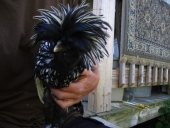I have kept several varieties together and they do not seem to be too racist, or care too much, but there are some breeds that are knuckleheads in general (leghorns, astrolops), but I have found chickens have personalities if you pay attention. I had Leghorns, Brahmas, Brown Sex Links, and Buffs together and they got along like peas and carrots when you watch them scratch and peck, but the minuite I would go out there, a number of them would cvome up to me to be petted and one sex link would go nuts and peck the ones that wanted petted. We called that chicken Pecky, but she was the tamest of them all, and all I could figure was she was jelous. There will always be a bit of hazing when you introduce new birds to the flock (sometimes downright mean), and the best way to reduce that is to introduce the new birds after the others have already roosted for the night.


